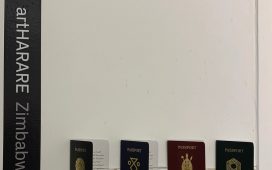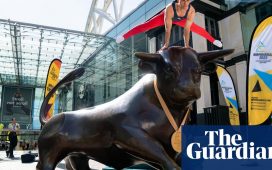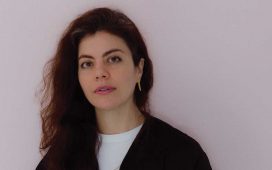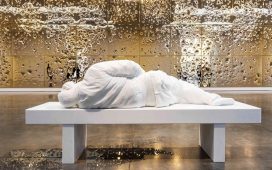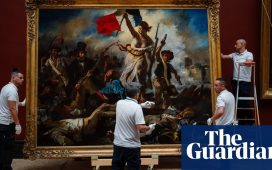On the face of it, Lauren Bon’s current art project, like its title, Bending the River, sounds like a Herculean task. The plan is to divert water from the part of the Los Angeles River that runs by downtown and clean it through natural filtration processes before sending it to the nearby Los Angeles State Historic Park for irrigation.
Last October, the project achieved a major milestone: the 300ft pipeline that channels river water to the well sited on the grounds of Bon’s Metabolic Studio was completed. Before this, tonnes of concrete lining the river had to be cut out and then tonnes put back in after clay pipes were inserted. As a testament to how much hardware and brute force this required, two gigantic, misshapen drill bits lie by the shaft for the well, dubbed the “Motherwell” by Bon.
“They got broken so [the construction company] gave them to us,” she says. “See, the steel is bent like a skirt.” Trained in architecture at the Massachusetts Institute of Technology, she creates art focused on the environment and our use of natural resources. Somewhere down the line the mangled drills may become part of a work or be otherwise repurposed, like so many other things that have been excavated or found during construction. “Nothing gets thrown away here,” she says. “Everything is saved and reused.”
Bon’s project is ambitious in several ways, from its physical scale and scope to its concept and costs. It is an ecological project, putting to use water that would normally pour into the Pacific Ocean. It is also meant to be a model of how creativity can solve dire environmental problems—in the case of Los Angeles, the scarcity of water.

Lauren Bon on site at Bending The River Photo courtesy Metabolic Studio
Bending the River started in 2012, as Bon was thinking about how to acknowledge the 100th anniversary of the Los Angeles Aqueduct, which has been bringing water from the Owens Valley to the city since 1913. That infrastructure project destroyed the valley’s farming community and dried up Owens Lake. “It seemed that the best way was to do better with the wastewater that we have,” she says. “Instead of moving that water out to sea, what if we could redirect some of that flow, clean it and redistribute it so that we don’t need to take so much pure water from snowcaps?”
Bon and her team have had to file around 100 applications with federal, state and local authorities to proceed. “Basically, the US Army Corps of Engineers controls the Los Angeles River,” Bon says. “The earth underneath the Los Angeles River is controlled by the city of Los Angeles and then the railroad has its own permits.” To argue its case, her studio calculated that over a ten-year period the project would save the state $1m in water costs.
The Metabolic Studio is a hulking industrial building with a view of the river on one side and Los Angeles State Historic Park across the street. Different sections are being used like laboratories: one area has been sealed off to see how toxic soil can be treated (“We put on our hazmat suits when we go in there”); another has been a repository for what has been dug up. On one side of the latter area, piles of soil are sprouting plants from long-forgotten seeds. On the other are stacks of cement blocks, cut into geometric shapes from the riverbed. Bon had designed the cuttings that way in order to reuse them to build a protective tower around the well.
A park from wasteland
The state park itself is the result of an earlier art project. It had been a waste site before Bon and her team helped clean it up and planted rows of corn there for Not a Cornfield (2005-06). Ruth Coleman was the director of California State Parks when Bon came to her office to ask permission for that project. It seemed a win for the public—the soil needed to be treated and landscaping needed to be done—so the project was approved. Today, most of the 32-acre parcel is a gently contoured public park, popular among joggers, picnickers and dogwalkers. Coleman, who is now the executive director of the California Parks Hospitality Association, also likes the sound of Bending the River. “The idea of our land attached to the river is so exciting,” she says. “You can see how we can knit together all these green areas.”

Artist Lauren Bon on site
Courtesy of Metabolic Studio
Bon’s Herculean project has cost $10m to date, including the three years of construction costs. Fortunately, it has a source of funding: the Metabolic Studio is part of the Annenberg Foundation, established as a family foundation by Bon’s late grandfather, Walter H. Annenberg, the publisher and philanthropist.
The studio is now working on the next stage of the project: getting river water through the studio to a section of the park across the street that has not yet been landscaped. “We’re going to be designing this four-acre site as the spreading ground for the river, before the water goes into the sprinkling system to maintain the rest of the park,” Bon says. This process will have an aesthetic, even spiritual, component. “At the beginning it will look very much like an earthwork. It’s going to be shaped like an anatomical heart made of soil. And then it will disintegrate and become a forest.”
Completion of Bending the River is scheduled for 22 April 2025, Earth Day, Bon says—“exactly 20 years from the beginning of Not a Cornfield”. In the meantime, part of the Metabolic Studio will be open to the public this autumn, in conjunction with an exhibition at Honor Fraser Gallery.

